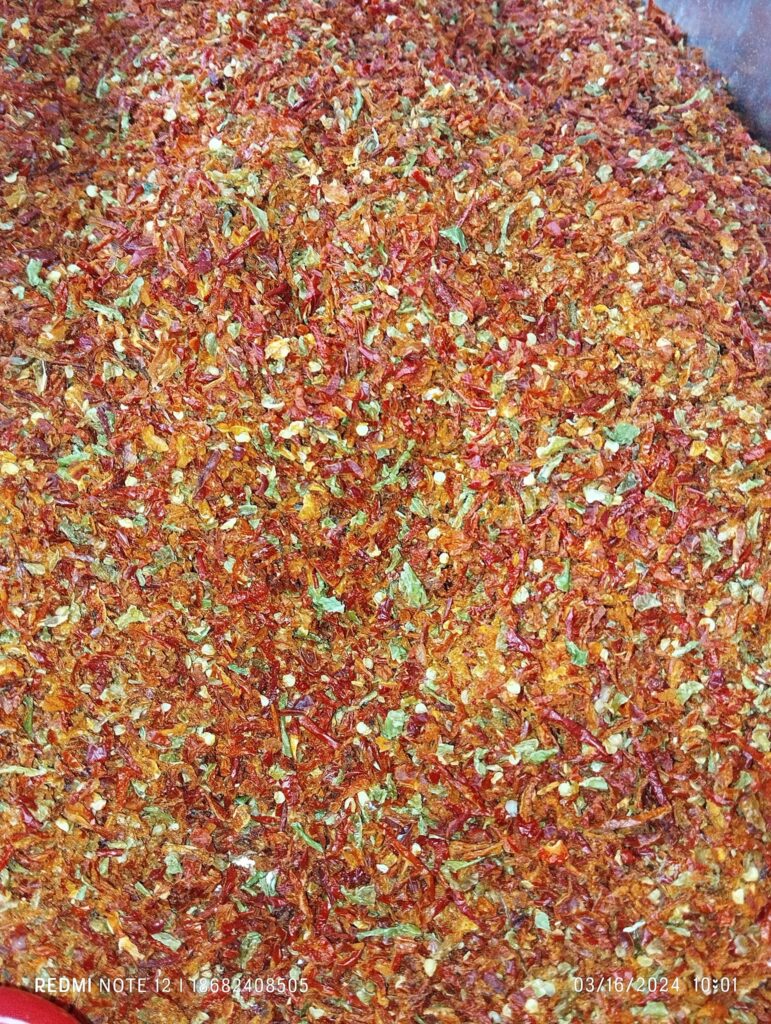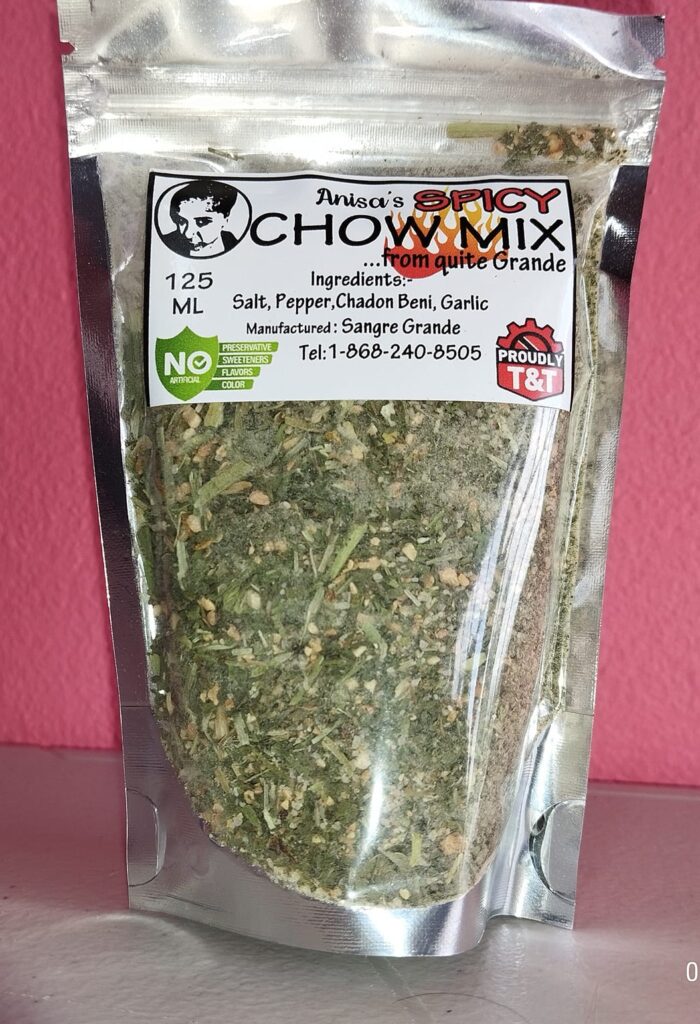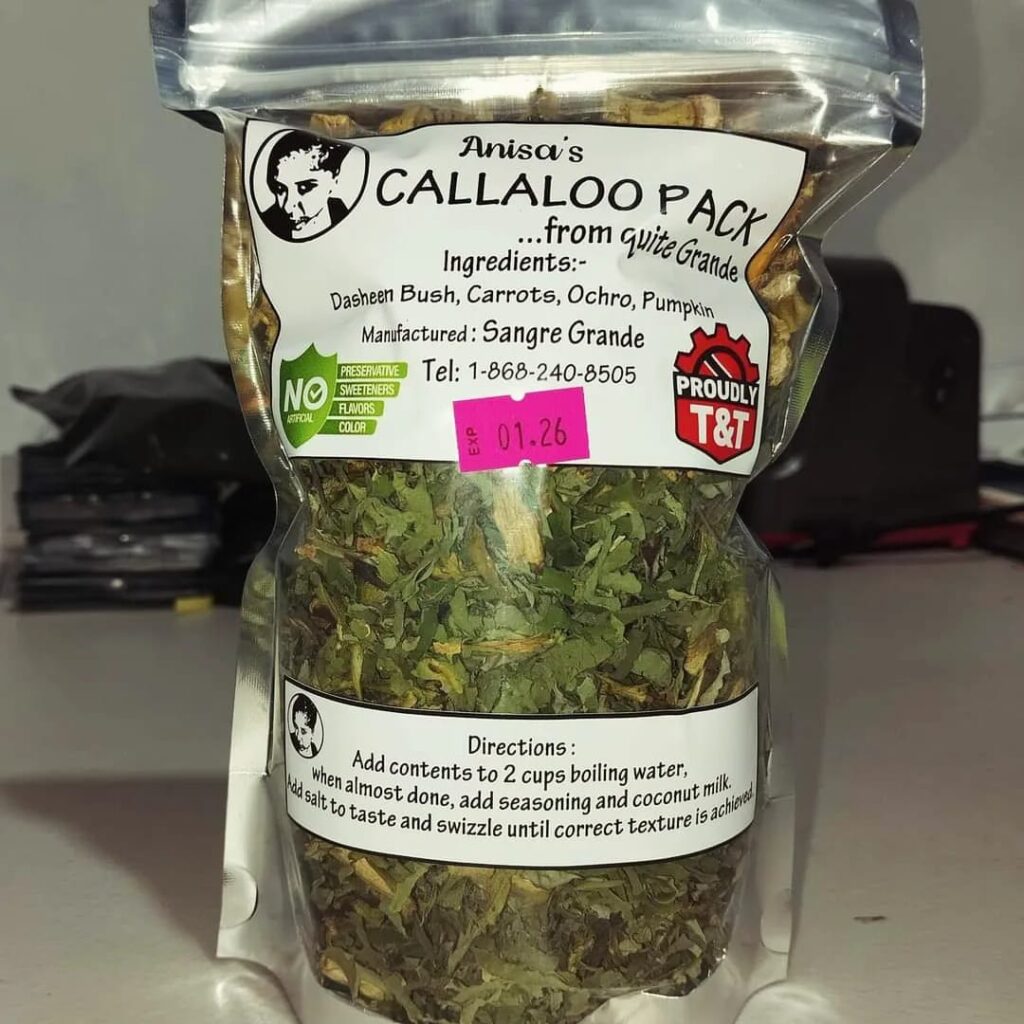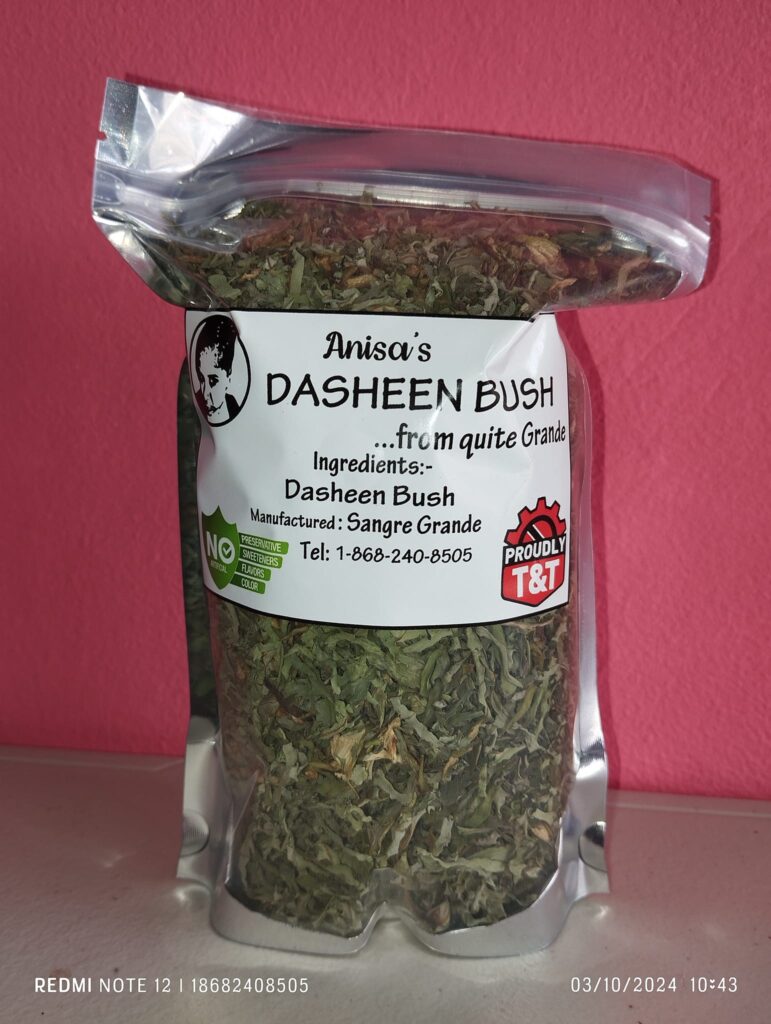Unlock the Potential of Your Brand with Our White Label Products
Are you looking to enhance your brand’s portfolio with high-quality products that reflect the essence of your business? Look no further. Our white label products provide the perfect solution, allowing you to offer outstanding items under your brand name. From conceptualization to market delivery, we ensure that you have access to top-tier products that can be customized to showcase your unique branding.
Your Brand, Your Business
With our white label products, you have the freedom to fully personalize each item with your logo, colors, and design elements. This means you can maintain a consistent brand image across all your offerings, ensuring that your customers recognize and trust your brand. Our products are meticulously crafted to meet stringent quality standards, ensuring that they not only look good but also perform exceptionally well.
Fastest Selling, Number 1 Products from Trinidad and Tobago
Among our extensive range of offerings, our fastest selling products hails from Trinidad and Tobago. These products has taken the market by storm, gaining widespread acclaim for its superior quality and innovative features. By incorporating these products into your brand’s line-up, you can leverage its popularity to drive sales and increase customer loyalty.
Why Choose Our White Label Products?
- Quality Assurance: Every product undergoes rigorous testing to ensure it meets the highest standards of quality and safety.
- Customization: Tailor the product to match your brand’s aesthetic and values, creating a unique identity in the market.
- Market Ready: Our products are designed to be market-ready, allowing for a quick and seamless integration into your existing line-up.
- Support: We offer comprehensive support from the initial design phase to the final launch, ensuring a smooth and efficient process.
Expand Your Business Horizons
By opting for our white label products, you open up new avenues for growth and profitability. Whether you are a start-up looking to make a mark or an established business aiming to diversify your offerings, our products provide the ideal platform to scale your operations.
Take the next step in your business journey with our white label products. Let your brand shine and stand out in the market with products that speak to the quality and reliability your customers expect.
For more information on how to get started, contact us today and discover the endless possibilities our white label solutions can bring to your brand.
Why Opt for Dehydrated Produce Over Fresh?
Choosing dehydrated produce over fresh can be beneficial for several reasons, depending on your needs and circumstances:
- Shelf Life: Dehydrated produce has a much longer shelf life than fresh produce. This makes it a convenient option for long-term storage and reduces food waste.
- Portability: Dehydrated produce is lightweight and compact, making it easy to transport. This is ideal for camping, hiking, or travel where fresh produce might not be practical.
- Cost-Effectiveness: Dehydrated fruits and vegetables are often more economical in the long run because you can buy in bulk and store them for extended periods without worrying about spoilage.
- Nutrient Retention: Dehydration can preserve a significant amount of the nutritional value of fruits and vegetables, especially when compared to nutrient loss that can occur during the storage of fresh produce.
- Convenience: Dehydrated produce is often pre-cut and ready to use. It can save time in meal preparation and can be a quick addition to recipes, especially when you don’t have fresh produce on hand.
- Reduced Spoilage: Dehydrated produce doesn’t spoil quickly like fresh produce. This can be particularly useful if you don’t use fruits and vegetables on a daily basis.
- Variety: Dehydrated produce can offer a wide range of fruits and vegetables that might not be available fresh year-round or in certain locations.
However, it’s worth noting that while dehydrated produce is handy, it might not always match the texture or flavor of fresh produce, particularly in raw applications. But in cooked dishes or as a snack, it can be a fantastic alternative.
No Preservatives!
Enjoy the pure taste of nature with every bite! By skipping preservatives, you’re not only savoring fresher, more vibrant flavors but also supporting a healthier lifestyle with no chemicals.
Unmatched Customer Service
Experience the extraordinary—where every interaction is a step beyond expectations. Our unmatched customer service isn’t just a promise; it’s a guarantee.
Unbeatable Quality
Discover the pinnacle of excellence—where every detail speaks of unbeatable quality. Experience craftsmanship and care that set the standard for perfection.
Consistency: Delivering the same high standard of quality every time, ensuring reliability and trustworthiness
Customer Satisfaction: Consistently meeting or exceeding customer expectations, leading to high levels of satisfaction and positive feedback.

Dried Trini pimento flakes come from a specific variety of pimento pepper known as the Trinidad Pimento, or Trini Pimento. This pepper is distinctively grown in Trinidad and Tobago and is renowned for its unique flavor profile.
Characteristics of Trini Pimento Peppers:
- Flavor Profile: The Trini pimento is known for its sweet, fruity flavor with a hint of spice, making it a bit milder than other hot peppers. It combines the warmth of pimento with a distinct sweetness, which adds depth to dishes without being overwhelmingly hot.
- Appearance: These peppers are usually small, red or orange, and have a rounded shape. When dried, they turn into flakes that maintain much of their original flavor.
- Dried Form: When dried and flaked, Trini pimento peppers preserve their aromatic qualities and offer a convenient way to add a burst of their characteristic flavor to various dishes.
Uses of Dried Trini Pimento Flakes:
- Culinary Applications: Dried Trini pimento flakes are versatile and can be used to season a variety of dishes. They are commonly used in Caribbean cuisine, including dishes like jerk chicken, curries, stews, and sauces. They can also be used in spice blends or as a finishing touch for soups and vegetables.
- How to Use: Sprinkle the flakes directly onto dishes, or incorporate them into recipes during cooking to enhance the flavor profile. They provide a milder spice and a hint of sweetness, making them a great option for those who enjoy a nuanced flavor without excessive heat.
Overall, dried Trini pimento flakes are valued for their unique and aromatic qualities, offering a subtle yet flavorful addition to many dishes.
Dried Chadon Beni, is a dried version of the fresh herb known for its intense flavor and aroma. Chadon Beni is a key ingredient in many Caribbean, Latin American, and Southeast Asian cuisines. Here’s a detailed overview of dried Chadon Beni:
What is Dried Chadon Beni?
- Chadon Beni (Culantro): It is a tropical herb related to cilantro but has a stronger, more pungent flavor. It is characterized by its long, serrated leaves and distinctive aroma.
- Drying Process: To make dried Chadon Beni, the fresh leaves are washed, chopped, and then dehydrated. This process removes the moisture, concentrating the flavor and extending the herb’s shelf life.
Characteristics:
- Flavor: Dried Chadon Beni has a robust and somewhat intense flavor, similar to fresh Chadon Beni but more concentrated. It combines a sharp, cilantro-like taste with earthy, peppery undertones.
- Aroma: The dried herb retains much of the distinctive aroma of fresh Chadon Beni, which can be quite potent and slightly pungent.
Uses:
- Seasoning:
- Flavoring: Use dried Chadon Beni to season soups, stews, sauces, and marinades. It imparts a complex and aromatic flavor that enhances a variety of dishes.
- Blends: It can be included in spice blends and rubs to add depth and a unique herbal note.
- Rehydration:
- Rehydrating: To use dried Chadon Beni in recipes where a more traditional texture is desired, rehydrate it by soaking it in water before adding it to your dish. This can be useful for dishes like sauces or braises where the herb’s texture might be important.
- Garnishes:
- Sprinkling: Although less common, dried Chadon Beni can be sprinkled over dishes as a finishing touch, similar to how you might use dried herbs.
- Cooking:
- Incorporation: Add dried Chadon Beni early in the cooking process to allow its flavors to infuse the dish. This is particularly useful in long-cooked dishes like stews or curries.
Benefits:
- Long Shelf Life:
- Storage: Dried Chadon Beni has a significantly longer shelf life than fresh Chadon Beni. When stored properly, it can last for several months to a year or more.
- Convenience: It is a convenient option for those who may not have access to fresh Chadon Beni or who prefer a pantry-stable ingredient.
- Intense Flavor:
- Concentration: The drying process concentrates the herb’s flavor, making a little go a long way in adding robust flavor to dishes.
How to Store:
- Container: Store dried Chadon Beni in an airtight container to protect it from moisture and light, which can degrade its flavor.
- Location: Keep it in a cool, dry place, away from direct sunlight and heat sources.
Tips for Use:
- Use Sparingly: Dried Chadon Beni can be quite potent, so use it sparingly and adjust to taste. It’s easy to add more, but difficult to reduce once it’s been added.
- Complementary Ingredients: Combine dried Chadon Beni with other herbs and spices that complement its flavor profile, such as garlic, onions, or cumin.
Dried Chadon Beni is a valuable ingredient for adding depth and intensity to dishes, especially in cuisines where its unique flavor is a signature component.


Using a dried chow mix is a convenient way to get the authentic flavors of Trini chow without having to source all the individual spices. It’s a great way to make a quick and flavorful snack or side dish!
Serve: Enjoy the fruit immediately or let it sit for a few minutes to let the flavors meld together.
Prepare the Fruit: Typically, Trini chow is made with fresh fruits like mangoes, pineapples, or apples. Peel and cut the fruit into bite-sized pieces.
Toss the Fruit: Place the cut fruit in a large mixing bowl. Sprinkle the dried chow mix over the fruit.
Mix Thoroughly: Toss the fruit and spice mix together until the fruit is well coated with the seasoning. You can use a spoon or your hands (wearing gloves) to ensure an even distribution.
Using a dried chow mix is a convenient way to get the authentic flavors of Trini chow without having to source all the individual spices. It’s a great way to make a quick and flavorful snack or side dish!
Serve: Enjoy the fruit immediately or let it sit for a few minutes to let the flavors meld together.
Prepare the Fruit: Typically, Trini chow is made with fresh fruits like mangoes, pineapples, or apples. Peel and cut the fruit into bite-sized pieces.
Toss the Fruit: Place the cut fruit in a large mixing bowl. Sprinkle the dried chow mix over the fruit.
Mix Thoroughly: Toss the fruit and spice mix together until the fruit is well coated with the seasoning. You can use a spoon or your hands (wearing gloves) to ensure an even distribution.


Dried pepper flakes from Trinidad, often referred to as “Trinidad pepper flakes” or “Trinidadian pepper flakes,” are a popular ingredient known for their intense heat and distinctive flavor. Trinidad is renowned for its hot peppers, particularly the Scotch bonnet and the Trinidad 7 Pot pepper, both of which are integral to the region’s cuisine. Here’s a closer look at dried pepper flakes from Trinidad:
Key Features:
- Pepper Varieties:
- Scotch Bonnet: A small, wrinkled pepper that is extremely hot, with a fruity and slightly sweet flavor. It’s one of the most popular peppers in Trinidadian cooking.
- Trinidad 7 Pot: Known for its intense heat, the 7 Pot pepper can be incredibly hot—sometimes even hotter than the Scotch bonnet. It has a fruity, citrus-like flavor.
- Heat Level:
- Trinidadian pepper flakes are typically very hot, often ranging from 100,000 to 350,000 Scoville Heat Units (SHU), depending on the specific pepper used. This makes them much hotter than standard red pepper flakes.
- Flavor Profile:
- Besides their heat, Trinidadian pepper flakes offer complex flavors that can include fruity, citrusy, and slightly sweet notes, which complement their spiciness.
Uses in Cooking:
- Seasoning:
- Sprinkle Trinidadian pepper flakes over dishes to add a spicy kick. They work well in stews, soups, marinades, and sauces.
- Cooking:
- Use them while cooking to infuse dishes with heat and flavor. They can be added to sautés, grilled meats, or even mixed into dips and dressings.
- Condiment:
- Combine the flakes with vinegar or oil to create a spicy condiment or hot sauce. This can be used to add heat to a variety of dishes.
- Flavor Enhancer:
- Incorporate into spice blends or rubs for meats and vegetables to give a distinctive Trinidadian heat and flavor.
How to Handle and Store:
- Handling:
- Use gloves when handling the pepper flakes, as they can irritate the skin and eyes. Avoid touching your face or rubbing your eyes after handling them.
- Storage:
- Keep dried pepper flakes in an airtight container, away from heat and light, to preserve their potency. Stored properly, they can last for several years.
Tips for Use:
- Start Small: Given their heat level, start with a small amount and adjust according to your tolerance for spiciness.
- Complementary Flavors: Pair with ingredients that can balance the heat, such as dairy, sweeteners, or acidic components like lime juice or vinegar.
- Experiment: Use Trinidadian pepper flakes in various cuisines to explore how they enhance different dishes with their unique heat and flavor.
Overall, Trinidadian dried pepper flakes are a potent ingredient that can elevate many dishes with their intense heat and complex flavor.
A dried callaloo pack that includes callaloo bush, okra (often spelled “ochra”), pumpkin, and carrot is a convenient, mixed vegetable product designed for easy preparation of Caribbean-style dishes. Here’s what you need to know about each component and how they come together:
Components:
- Callaloo Bush: This is the primary ingredient, a leafy green similar to spinach. It has a rich, slightly earthy flavor and is packed with nutrients. In dried form, it retains much of its flavor and nutritional value.
- Okra (Ochra): Okra is known for its unique texture and mild, slightly grassy flavor. In dried form, it can add a distinct taste and texture to dishes, and it is often used in soups and stews. When dried, okra loses some of its slimy texture but retains its flavor.
- Pumpkin: Dried pumpkin adds a sweet, rich flavor and a bit of color to dishes. It’s typically sliced and dried, and when rehydrated, it can provide a hearty, slightly sweet element.
- Carrot: Carrots add a subtle sweetness and vibrant color. Dried carrots are usually sliced into small pieces or flakes, and they contribute both flavor and texture to the mix.
Uses of the Dried Pack:
- Culinary Applications: This dried vegetable mix is ideal for making traditional Caribbean Callaloo. You can use it to prepare dishes like callaloo soup, or a side in rice dishes. The combination of vegetables provides a balanced flavor profile with earthy, sweet, and slightly spicy notes.
- Preparation: To use the dried pack, you’ll need to rehydrate it. This typically involves soaking the dried vegetables in warm water or broth for a period of time until they are tender. The soaking time may vary depending on the specific mix and the desired texture.
- Cooking: After rehydration, the vegetables can be added to your dish according to the recipe.
Storage:
- Shelf Life: Dried vegetable packs have a long shelf life if stored properly. Keep them in a cool, dry place in an airtight container to maintain freshness and prevent moisture from causing spoilage.
- Usage: Use the dried vegetables within the recommended time frame (usually listed on the packaging) to ensure optimal flavor and texture.
This dried vegetable mix offers a convenient way to enjoy a variety of flavors and nutrients from traditional Caribbean ingredients without needing to keep fresh produce on hand.


Dried dasheen bush is made from the leaves of the dasheen plant, also known as taro (scientifically, Colocasia esculenta). Dasheen is a tropical root vegetable that is widely used in Caribbean, Pacific Island, and Asian cuisines. The plant has both edible tubers and leaves, which are used in various dishes. Here’s what you need to know about dried dasheen bush:
Characteristics of Dried Dasheen Bush
- Source: Dasheen bush refers to the leaves of the taro plant. The leaves are rich in nutrients and are used in cooking for their flavor and texture.
- Drying Process: To create dried dasheen bush, the fresh leaves are cleaned, and then dried. The drying process concentrates the flavor and makes the leaves shelf-stable.
- Appearance: Dried dasheen bush typically appears as dark green, crisp flakes or fragments. It retains much of its original flavor but with a more concentrated taste.
Uses of Dried Dasheen Bush
- Culinary Applications: Dried dasheen bush can be rehydrated and used in a variety of dishes. It’s commonly used in Caribbean cuisine in soups, stews, and curries. It’s a key ingredient in traditional dishes like Callaloo, which is a popular dish in Trinidad and Tobago. The rehydrated leaves have a rich, slightly earthy flavor that complements other ingredients well.
- Preparation: To use dried dasheen bush, you need to rehydrate it. This usually involves soaking the dried leaves in warm water or broth until they become tender. This process can take 15-30 minutes, depending on the drying method and desired texture.
- Cooking: After rehydration, the dasheen bush can be added to your recipes. It can be simmered in soups or stews, mixed into rice dishes, or used in other savory preparations.
Storage
- Shelf Life: Dried dasheen bush has a long shelf life if stored properly. Keep it in a cool, dry place in an airtight container to maintain its flavor and prevent moisture from causing spoilage.
- Usage: Use dried dasheen bush within the time frame recommended on the packaging to ensure the best flavor and texture.
Nutritional Value
- Nutrients: Dasheen bush is nutritious, providing vitamins A and C, calcium, iron, and dietary fiber. It’s a good addition to a balanced diet, especially in its dried form where its nutrient density is concentrated.
Overall, dried dasheen bush is a convenient and flavorful ingredient that brings the taste of tropical and Caribbean cuisine into your kitchen with ease.
Dried Trini Gourmet Seasoning is a versatile blend of spices and herbs that can be used to add flavor to a wide variety of dishes. It’s designed to be a one-stop seasoning mix that simplifies cooking by eliminating the need to measure out multiple individual spices. Here’s a breakdown of how it can be used:
How to Use Dried Trini Gourmet Seasoning:
- Seasoning Meat: Sprinkle the seasoning on meat before cooking, whether you’re grilling, baking, or pan-frying. It adds a balanced flavor to chicken, beef, pork, or fish.
- Vegetables: Toss vegetables in the seasoning before roasting or grilling to enhance their flavor.
- Soups and Stews: Add a pinch or two to soups, stews, or sauces for a well-rounded flavor.
- Rice and Pasta: Stir into rice, pasta, or grains to give them extra taste.
Tips for Using Dried Trini Gourmet Seasoning:
- Adjust Quantity: Start with a small amount and adjust to taste. Trini Gourmet Seasoning can be quite potent, so you might not need as much as you think.
- Store Properly: Keep the seasoning in an airtight container, away from heat and moisture, to maintain its potency and flavor.
Dried Trini Gourmet seasoning is meant to be a convenient way to enhance your dishes with a balanced blend of flavors, making it a staple in many kitchens.


Dried celery is a form of celery that has been dehydrated to remove its moisture. This process extends its shelf life and makes it a convenient option for adding celery flavor to dishes without the need for fresh celery. Here’s an overview of dried celery, including its uses and benefits:
What is Dried Celery?
- Preparation: Dried celery is made by washing, chopping, and then dehydrating celery stalks and leaves.
- Forms: It is commonly available as dried celery flakes or granules. The flakes are larger pieces of dried celery, while the granules are finely ground.
Characteristics:
- Flavor: Dried celery retains much of the characteristic flavor of fresh celery, though it may be slightly more concentrated. It provides a savory, slightly peppery taste with hints of earthiness.
- Texture: Once dried, celery becomes brittle and crispy. The texture of dried celery is much different from fresh celery, and it’s usually rehydrated before use.
Uses:
- Seasoning and Soups:
- Flavors: Use dried celery as a seasoning in soups, stews, and sauces. It adds a subtle celery flavor without the need for fresh celery.
- Convenience: It’s especially useful in dishes where you want the flavor of celery but don’t have fresh celery on hand.
- Spice Blends and Rubs:
- Blends: Incorporate dried celery into spice blends and rubs for meats and vegetables to add depth of flavor.
- Rehydration:
- Rehydrating: You can rehydrate dried celery by soaking it in water. This makes it suitable for recipes that require the texture of celery, such as stuffing or casseroles. The rehydrated celery can be used in place of fresh celery.
- Salads and Garnishes:
- Garnishes: Use dried celery flakes as a garnish for salads, dressings, or other dishes to add a touch of celery flavor.
Benefits:
- Long Shelf Life:
- Storage: Dried celery can be stored for long periods without refrigeration, making it a convenient pantry staple.
- Shelf Life: When kept in an airtight container in a cool, dry place, dried celery can last for several months to a year or more.
- Convenience:
- Ready to Use: It eliminates the need for washing, chopping, and storing fresh celery, which can be particularly useful in meal prepping and camping.
- Space-Saving:
- Storage Efficiency: Dried celery takes up less space than fresh celery, which is helpful in limited storage areas.
How to Store:
- Container: Store dried celery in an airtight container or resealable bag to keep it dry and free from moisture.
- Location: Keep it in a cool, dry place, away from direct sunlight and heat, to maintain its flavor and potency.
Tips for Use:
- Adjust Quantity: Since dried celery is more concentrated than fresh celery, use it in smaller quantities and adjust according to taste.
- Combine with Fresh Ingredients: For dishes that benefit from the texture of fresh celery, consider combining dried celery with fresh ingredients or rehydrating it.
Dried celery is a versatile and practical ingredient that can enhance the flavor of many dishes, providing a convenient alternative to fresh celery when needed.
